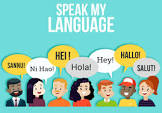The Benefits of Bilingual Education
Bilingual education is a method of instruction that uses two languages, typically a student’s native language and a second language, to teach academic content. This approach has gained popularity in schools around the world due to its numerous benefits for students.
Cognitive Development
Research has shown that bilingual education can enhance cognitive skills such as problem-solving, critical thinking, and multitasking. By learning and using two languages, students develop stronger executive function skills that can benefit them in various areas of their academic and professional lives.
Cultural Awareness
Bilingual education helps students gain a deeper understanding and appreciation of different cultures. By learning a second language, students are exposed to new perspectives, traditions, and ways of thinking, fostering empathy and cultural sensitivity.
Academic Achievement
Studies have indicated that students in bilingual education programs often outperform their monolingual peers academically. Bilingualism has been linked to improved reading comprehension, problem-solving abilities, and overall academic success.
Career Opportunities
In today’s globalized world, being bilingual is a valuable asset in the job market. Employers often seek candidates who can communicate effectively in multiple languages, opening up a wide range of career opportunities for bilingual individuals.
Language Skills Development
Bilingual education not only helps students become proficient in two languages but also enhances their overall language skills. Students tend to have better grammar, vocabulary, pronunciation, and writing abilities compared to monolingual learners.
In conclusion, bilingual education offers a myriad of benefits for students, ranging from cognitive development and academic achievement to cultural awareness and career opportunities. By embracing bilingualism in schools, we can empower students to succeed in an increasingly diverse and interconnected world.
Exploring Bilingual Education: Understanding Its Concepts, Benefits, and Strategies for Academic Success
- What is bilingual education?
- What are the benefits of bilingual education?
- How does bilingual education impact academic performance?
- Is bilingual education suitable for all students?
- What strategies are used in bilingual education programs?
What is bilingual education?
Bilingual education is an instructional approach that incorporates two languages, typically a student’s native language and a second language, to deliver academic content. This method aims to help students develop proficiency in both languages while also enhancing their cognitive abilities, cultural awareness, and academic achievement. By providing instruction in multiple languages, bilingual education promotes language skills development and prepares students for success in a globalized world where multilingualism is increasingly valued.
What are the benefits of bilingual education?
Many individuals inquire about the benefits of bilingual education, seeking to understand the advantages it offers to students. Bilingual education not only enhances cognitive development by improving problem-solving and critical thinking skills but also fosters cultural awareness by exposing students to different traditions and perspectives. Academic achievement is often heightened in bilingual programs, with students showing improved reading comprehension and problem-solving abilities. Furthermore, being bilingual opens up a myriad of career opportunities in today’s globalized world, making it a valuable asset for individuals seeking to thrive in diverse professional environments.
How does bilingual education impact academic performance?
Bilingual education has a significant impact on academic performance by enhancing cognitive skills, improving problem-solving abilities, and boosting overall academic achievement. Research has shown that students in bilingual education programs often outperform their monolingual peers in various academic areas. By learning and using two languages, students develop stronger executive function skills that can help them excel in tasks that require critical thinking and multitasking. Bilingualism has also been linked to improved reading comprehension, language proficiency, and overall cognitive development, all of which contribute to higher academic success among bilingual learners.
Is bilingual education suitable for all students?
When considering the suitability of bilingual education for students, it is important to recognize that individual needs and circumstances vary. While bilingual education has been shown to offer numerous benefits, such as cognitive development, cultural awareness, and academic achievement, it may not be the best fit for every student. Factors such as language proficiency, learning style, cultural background, and personal preferences should be taken into account when determining the appropriateness of bilingual education for a student. Schools and educators should assess each student’s unique characteristics to determine whether bilingual education aligns with their academic goals and overall well-being. Ultimately, a tailored approach that considers the diverse needs of students is essential in determining the suitability of bilingual education for each individual.
What strategies are used in bilingual education programs?
In bilingual education programs, a variety of strategies are employed to effectively teach students in two languages. Some common strategies include dual language instruction, where academic content is taught in both languages; translanguaging, which encourages students to use both languages interchangeably to enhance learning; language immersion, where students are fully immersed in the second language; and scaffolded instruction, which provides support and guidance as students develop proficiency in the second language. These strategies aim to create a supportive and immersive learning environment that promotes bilingualism, academic success, and cultural understanding among students.

